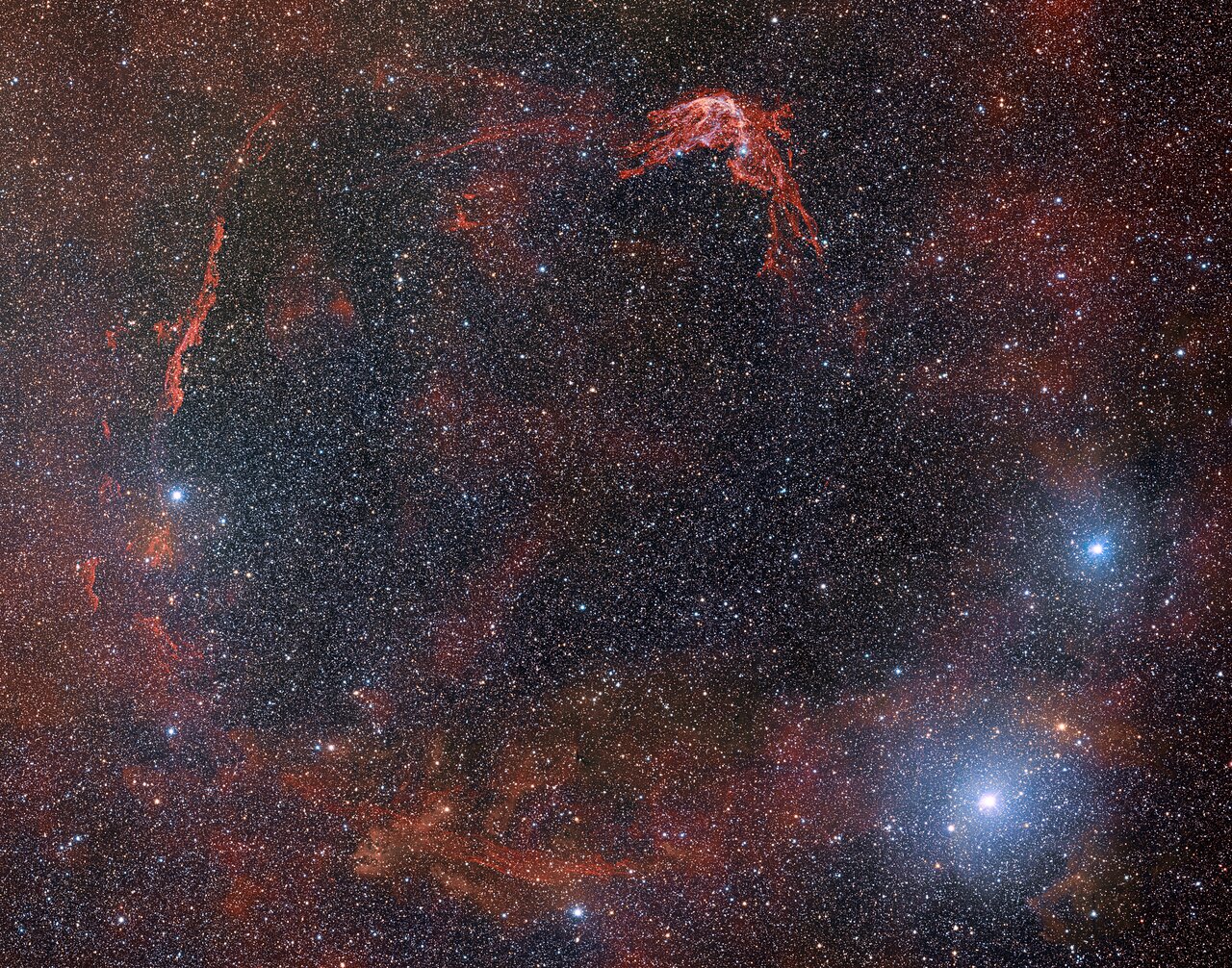Astronomers catch rare glimpse of oldest known supernova, which dates back to Year 185
In the year 185 A.D. Chinese astronomers witnessed a temporary 'guest star' emerge in the sky.

A new image taken by a camera designed to study dark matter has revealed remnants of an ancient supernova explosion in unprecedented detail.
The image, captured by the Dark Energy Camera on the National Science Foundation’s (NSF) Víctor M. Blanco 13.2-foot (4 meters) Telescope at the Cerro Tololo Inter-American Observatory in Chile, shows scattered tendril-like clouds of dust and gas dispersing around the supernova's central point.
These torn pieces encircle an area larger than the apparent size of the full moon set between the constellations Circinus and Centaurus in the southern sky. The odd cloud, known to astronomers as object RCW 86, is believed to be material from a star that exploded more than 1,800 years ago with such ferocity that it drew the attention of ancient Chinese astronomers and chroniclers.
Related: Supernova 'alert system' could warn us of stars about to explode
Dubbed the "quest star" by the ancient Chinese for its temporary nature, the supernova, today officially known as SN 185, was spotted in the year 185 A.D. (hence the name) and faded over eight months. Astronomers now know that the event occurred 8,000 light-years away in the direction where the sun's closest stellar sibling, the triple star Alpha Centauri, is located.
Thanks to its ability to see a large portion of the sky at the same time without compromising on the level of detail, the Dark Energy Camera provided astronomers with a "rare view of the entire supernova remnant as it is seen today," the NSF NOIRLab, which released the image on Wednesday (March 1), said in a statement.
Astronomers hope that this new and deeper look at the object will help them better uncover the perplexing physics that drove the long-ago explosion that created it.
Breaking space news, the latest updates on rocket launches, skywatching events and more!
While astronomers today agree that RCW 86 is a residue of the SN 185 supernova, it hasn't always been the case. For a long time scientists thought that the size of the shell was too large to have been produced in that explosion.
Calculations from previous studies estimated that it would take 10,000 years for material to disperse so far away from the dead star. In 2006, however, astronomers found evidence that the shell developed at a much faster rate than they had originally believed. Eventually, observations by NASA's Spitzer Space Telescope revealed large amounts of iron in the material, which led astronomers to conclude that the explosion that produced RCW 86 must have been the most energetic known type of a supernova, one that occurs when a white dwarf star, a dense remnant of sun-like star, consumes an orbiting companion.
These types of supernovas, known as Type Ia supernova, produce so much light that the phenomenon wouldn't go unnoticed even in the distant past when astronomers were limited to naked eye observations.
"These supernovae are the brightest of all and no doubt SN 185 would have awed observers while it shone brightly in the night sky," researchers wrote in the statement.
Follow Tereza Pultarova on Twitter @TerezaPultarova. Follow us on Twitter @Spacedotcom and on Facebook.

Tereza is a London-based science and technology journalist, aspiring fiction writer and amateur gymnast. Originally from Prague, the Czech Republic, she spent the first seven years of her career working as a reporter, script-writer and presenter for various TV programmes of the Czech Public Service Television. She later took a career break to pursue further education and added a Master's in Science from the International Space University, France, to her Bachelor's in Journalism and Master's in Cultural Anthropology from Prague's Charles University. She worked as a reporter at the Engineering and Technology magazine, freelanced for a range of publications including Live Science, Space.com, Professional Engineering, Via Satellite and Space News and served as a maternity cover science editor at the European Space Agency.
